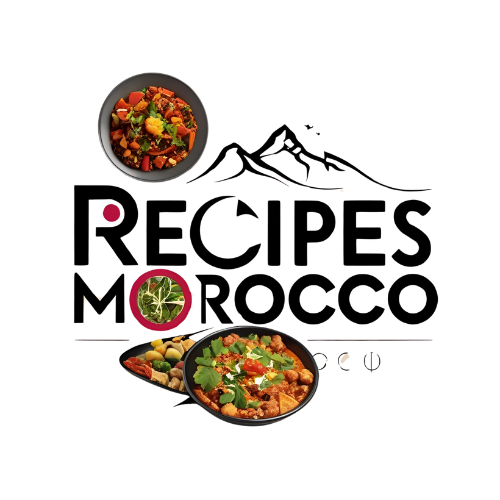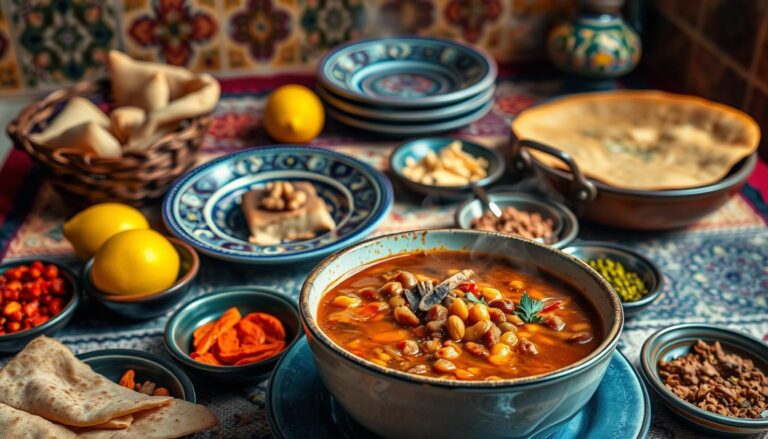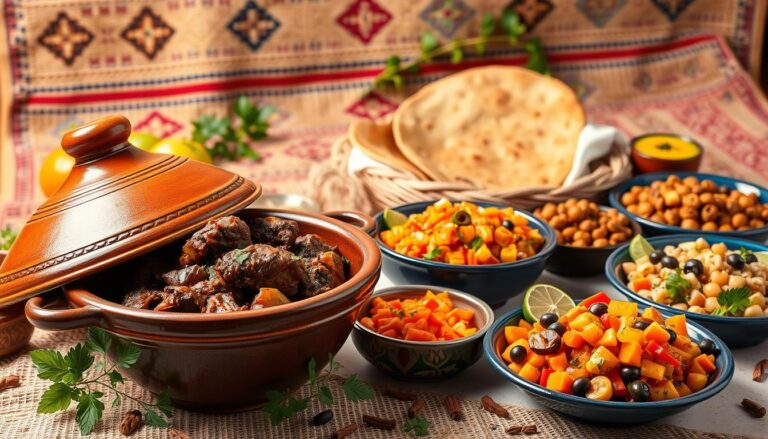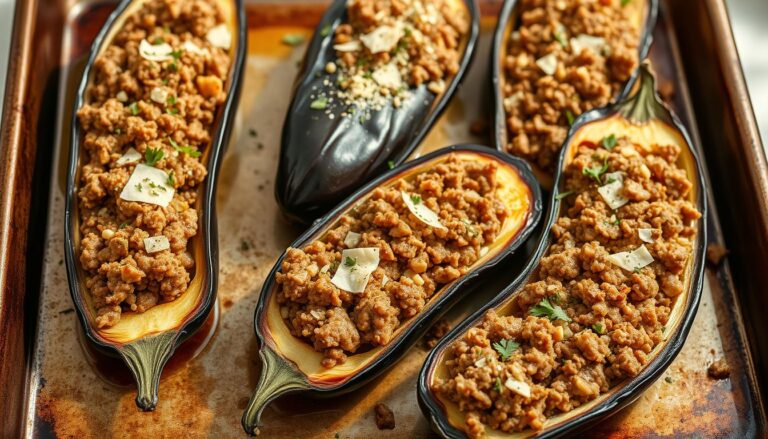Examining Moroccan Street Cuisine: Essential Snacks
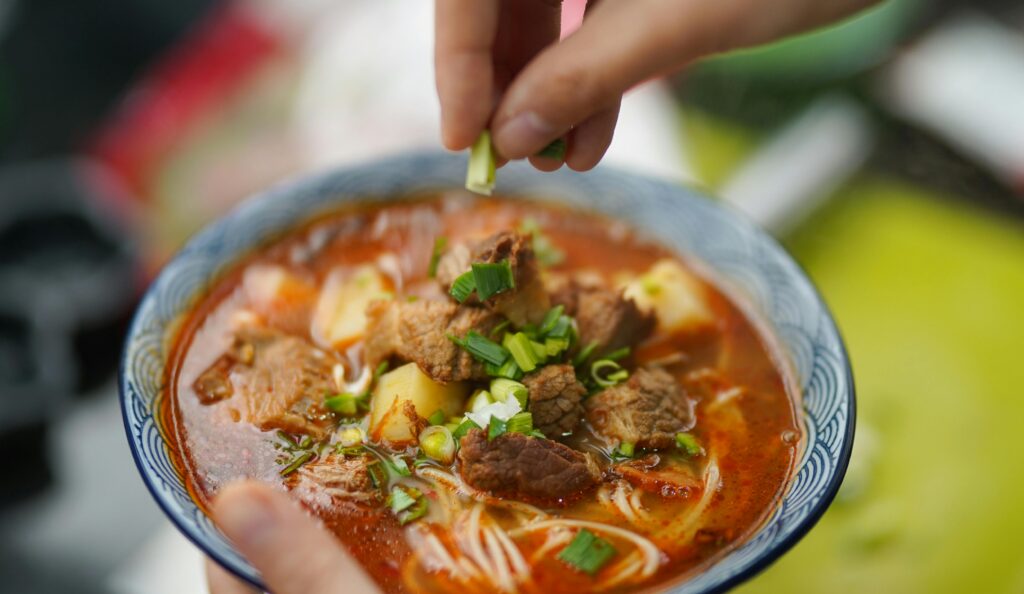
Moroccan street cuisine, which offers a variety of flavors, textures, and scents that appeal to both locals and tourists, is a colorful representation of the nation’s rich culinary heritage. The sights and sounds of food preparation, where mouthwatering delicacies are created with passion and tradition, fill Morocco’s streets, from busy marketplaces to street sellers. In Morocco, street food is more than simply fast food; it’s a reflection of the people’s creativity, culture, and sense of community. Moroccan street cuisine is a delightful experience of the country’s unique flavors, with each region having its own delicacies influenced by local products and culinary techniques. Ten must-try Moroccan street food snacks will be covered in this post, each of which highlights the distinctive ingredients and preparation techniques that characterize this colorful cuisine. These delicacies will definitely entice your taste buds and give you a genuine experience of Morocco, whether you’re exploring the coastal streets of Essaouira or the winding alleys of Marrakech.
Sfenj: The Doughnut from Morocco
Sfenj, often known as Moroccan doughnuts, are a popular street food treat that epitomizes decadence. A basic dough consisting of flour, yeast, and water is used to make these deep-fried delicacies. It is then allowed to rise before being formed into rings and deep-fried till golden brown. As a result, the inside becomes light and airy while the outside becomes crispy. Sfenj are often served hot and can be eaten either unadorned or with powdered sugar on top. For an added sweet pleasure, some vendors now sell versions that are filled with honey or syrup. Sfenj are a great way to experience Moroccan hospitality and culinary culture, and they are frequently found at markets and food stalls, particularly for breakfast or as a late-night snack.
Brochettes: Flavorful Grilled Skewers
In Morocco, brochettes—marinated and grilled skewers of meat, usually lamb, beef, or chicken—are a common street snack. The meat gains rich flavors via the marinating procedure, which frequently uses a mixture of spices like garlic, paprika, and cumin. The meat is roasted over open flames after being skewered, giving the vendor’s stall a smoky scent that attracts customers. For an extra kick, brochettes are frequently served with a side of fresh bread and a drizzle of hot harissa sauce. Offering a flavor of Morocco’s grilling customs and the communal attitude of sharing food, this straightforward but filling snack is a mainstay at food stalls and marketplaces.
Flaky Moroccan Pancakes with Msemen
Traditional Moroccan pancakes called msemen are renowned for their variety and flaky texture. Before being pan-fried till golden brown, msemen, which are made from a basic dough of flour and water, are repeatedly rolled and folded to form layers. These pancakes, which are filled with cheese, veggies, or minced meat, can be eaten sweet or savory. While savory varieties are usually served with a hot dipping sauce, street vendors frequently serve msemen with a side of honey or jam for a sweet pleasure. Msemen are a common morning or midday snack that highlight the versatility of Moroccan street food and the value of sharing delectable meals with others.
B’stilla: A Delightful Savory Pastry
The traditional Moroccan pastry known as pastilla, or b’stilla, skillfully combines salty and sweet ingredients. Although they are frequently cooked with chicken or pigeon, vegetarian variants are equally well-liked. The meal consists of layers of thin pastry filled with a delicious blend of eggs, almonds, and spiced pork, and is finished with a coating of cinnamon and powdered sugar. B’stilla is a portable food that is frequently sold by street sellers in individual servings. B’stilla is a true gastronomic delight, displaying the complexities of Moroccan cookery and the cultural significance of sharing food during festivities and gatherings thanks to the contrast of flaky pastry and savory filling.
Moroccan Stew Iconic: Tagine
Although tagine is typically prepared at home, it has found its way into Moroccan streets as a filling street food choice. A conical pot that maintains moisture and taste is used to prepare a variety of items, such as meats, vegetables, and spices, in a slow-cooked stew called tagine. With a side of couscous or crusty bread, street vendors frequently serve tagine cooked with chicken, lamb, or vegetables. Tagine’s deep, fragrant tastes make it a satisfying and cozy snack for people who are touring the busy marketplaces. A must-try street food experience, the communal nature of sharing a tagine lunch emphasizes the significance of food in Moroccan society.
A Hearty Soup, Harira
A classic Moroccan soup, harira is particularly well-liked during Ramadan but is a healthy street food choice all year long. Lentils, chickpeas, tomatoes, and a mixture of spices like cumin, cinnamon, and ginger are the ingredients of this filling soup. Harira is served hot and topped with fresh herbs like parsley and cilantro, and it is frequently enhanced with bits of meat. Harira is served in bowls by street vendors, frequently with dates or traditional bread for dipping. Harira’s rich aromas and warming properties make it a satisfying snack, particularly on chilly days, demonstrating the breadth of Moroccan culinary customs.
Zaalouk: Salad with Smoked Eggplant
A popular Moroccan salad that brings out the aromas of grilled eggplant and tomatoes is called zaalouk. The ingredients for this easy yet delectable recipe include sautéed tomatoes, garlic, paprika, cumin, and eggplants that have been roasted until they are soft and smokey. A thick, tasty paste that can be served warm or at room temperature is the end product. Zaalouk is frequently served as a dip by street vendors with fresh bread for scooping. Its thick texture and smoky flavor make it a great side dish for grilled meats or a filling snack on its own. Zaalouk is the epitome of Moroccan food, where exceptional flavors are produced with basic methods and fresh ingredients.
A Cool Bread Salad, Fattoush
Fattoush is a tasty and inventive snack that is a refreshing Moroccan salad made with leftover bread. Toasted or fried flatbread pieces are usually mixed with fresh vegetables like tomatoes, cucumbers, and radishes in the salad. The tangy flavor of the dressing, which is created with olive oil, lemon juice, and sumac, highlights how fresh the ingredients are. Fattoush is frequently offered by street sellers as a portable, healthful snack. In addition to demonstrating the value of utilizing all of an ingredient, this salad captures the rich flavors and textures of Moroccan cooking.
Spiced Meatballs, or Kefta
A common street food snack that showcases the flavors of Moroccan spices is kefta, or spiced meatballs. Shaped into little balls or patties and grilled or fried, kefta is made with ground beef or lamb combined with herbs and spices including cumin, coriander, and parsley. Kefta is frequently served by street sellers with fresh bread and a range of dipping sauces, such as tart yogurt or spicy harissa. The succulent, aromatic meatballs are a filling snack that highlights the complexity of Moroccan spices and provides a quick and easy choice for people who are constantly on the go. A great illustration of how street food can be both delectable and indicative of a region’s culinary culture is kefta.
Mint Tea: The Ultimate Concoction
Perhaps the most recognizable beverage in Moroccan culture is mint tea, which is frequently offered as a greeting to visitors. Green tea is steeped with sugar and fresh mint leaves to make this delightful beverage, which is sweet and fragrant and can be savored all day. In the traditional way, street vendors make mint tea by pouring it from a height to provide taste and aeration. Mint tea, which is frequently served in elaborate glasses, is a symbol of Moroccan hospitality and the value of sharing food and beverages with others. It is a must-have for every Moroccan culinary adventure since it goes well with a variety of street cuisine appetizers.
In conclusion
A wonderful tour across Morocco’s diverse culinary landscape, street food offers a range of flavors and textures to suit any pallet. Each snack, from the hearty harira to the decadent sweetness of sfenj, narrates a tale of creativity, tradition, and community. Moroccan street cuisine is more than just fast food; it’s a cultural staple that emphasizes the value of sharing meals and the happiness that comes from getting together with loved ones. These must-try nibbles give you a genuine experience of Morocco’s thriving culinary industry as you explore its marketplaces and streets. Moroccan street cuisine offers a singular chance to encounter the friendliness and warmth that characterize this alluring country, whether you’re indulging on grilled brochettes or relishing the cool flavors of mint tea. Savor Moroccan flavors and allow each bite to take you to a world of delectable cuisine that honors the craft of cooking.
